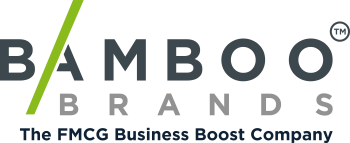Why is it so difficult for FMCG manufacturers to predict consumer behaviour? Because consumers (often) don't do what they say. Then we can speak of an Intention-Behaviour Gap. What exactly is it and how can you take this into account when conducting market research? We have interviewed Antien Zuidberg of HAS green academy about this subject.
Antien Zuidberg is a lecturer of the lectureship Design Methods in Food. The lectureship conducts research on various methods to explore and support healthy and sustainable food choice behaviour. One of the initiatives is the Consumer Behaviour Lab, which Bamboo Brands will develop together with HAS green academy. Read more about this initiative.

What is the Intention-Behaviour gap?
Antien Zuidberg: "Simply put, it means that there is a gap between consumer intentions and consumer behaviour. For example, a consumer has the intention to buy healthy, fresh products, but once in the supermarket he still chooses an unhealthy ready-made meal. This also applies to sustainable choices. Many consumers do want to make sustainable choices, but for many reasons this often does not happen. For example, because another product seems more tempting or because the consumer does not really know what a sustainable choice is."
Is it possible to predict consumer behaviour?
Antien explains: "It is difficult for food manufacturers to predict consumer behaviour. As a result, many innovations disappear from the shelves within a year because the sales disappoint. Or products are not even included in the product range because the retailer does not believe in them. The problem is that market research is often based on conversations with consumers, but those conversations are often not predictable for consumer behaviour."
How can we better predict consumer behaviour?
Antien: "In the research phase, FMCG companies should use methods that measure actual consumer behaviour and do have a predictive value. You need facts about consumer behaviour instead of consumer opinions. With those facts, you can measure whether your concept is heading in the right direction and, if so, you can subsequently convince the retailer. In the Consumer Behaviour Lab, we study these methods. We also develop all kinds of tools that help food innovators to better connect with what actually drives consumers."
Antien continues: "One such tool is the temptation toolbox. This model provides insight into ways in which you can tempt consumers to choose your sustainable or healthy product. As a metaphor, we use the interplay between bees and flowers. The bee represents the consumer, the flowers represent concepts in the shop and the meadow represents the location itself. The temptation toolbox takes into account all aspects of the innovation process: from the location on the shelf to packaging and techniques such as nudging and framing."
What are your ambitions for the future?
Antien: "My dream is to use the Consumer Behaviour Lab to offer a set of methods that will help students, professors and the industry to innovate successfully in food. Bamboo Brands shares this ambition with us, which makes our collaboration so valuable. I hope that in a certain number of years, food and FMCG companies will no longer be talking about classic surveys and focus groups, but will be able to use the right methods that predict consumer behaviour. Then we can sustainably change the way the food sector innovates and reduce the failure rate of innovations."
Want to know more about consumer behaviour?
Want to know more about the Consumer Behaviour Lab? Or do you have questions about our research methods as a result of this story? We would be happy to tell you more. Contact Theo Toering at theo@bamboobrands.com or Antien Zuidberg at A.Zuidberg@has.nl.







